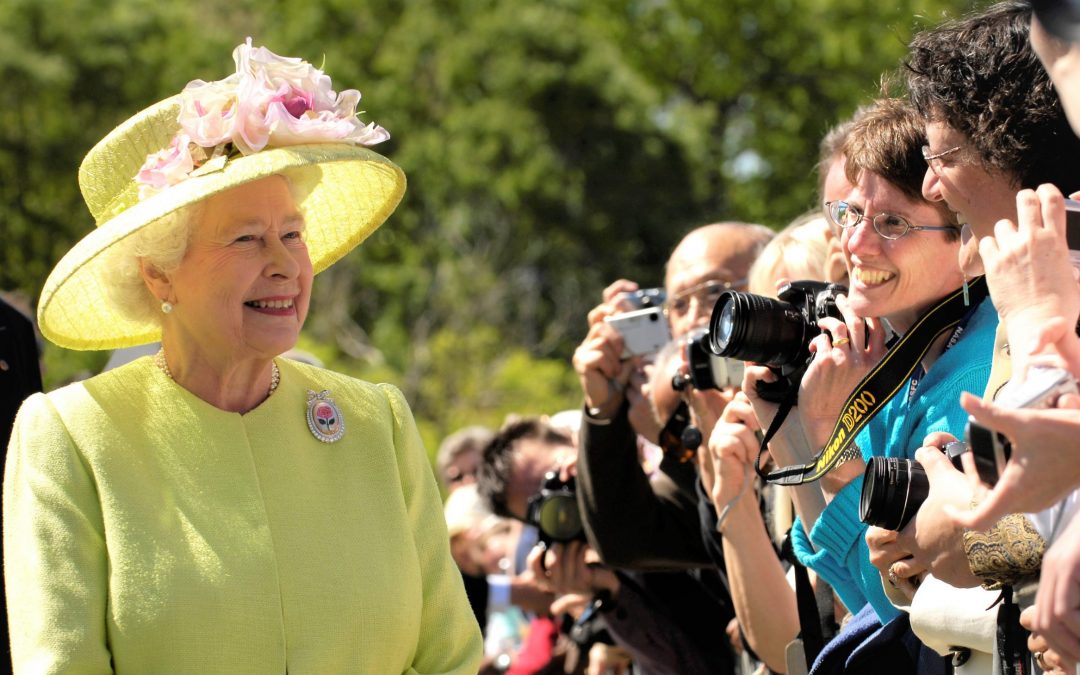
Royal Faith
Royal Faith
By Steve Beard-
There is an intriguing scene in Season 2 of the wildly successful historical drama, The Crown, on Netflix. For the uninitiated, the award-winning series revolves around the reign of Queen Elizabeth II, the now 91-year-old sovereign of the United Kingdom.
At the beginning of episode six, Elizabeth (played by Clare Foy) is studiously watching Billy Graham preach on television in 1955 while sitting with her mother in Buckingham Palace. The Queen Mother (played by Victoria Hamilton) finds Graham to be more than an acquired taste for the upper class British religious sensibilities. She appears perturbed that the public is captivated by a man who learned his trade “selling brushes door-to-door in North Carolina” and that British subjects turned “out in droves for an American zealot.”
“He is not a zealot,” Elizabeth responds.

Claire Foy as Queen Elizabeth II and Matt Smith as Philip Mountbatten, Duke of Edinburgh in The Crown a Netflix Original. Photo source: Robert Viglasky | Netflix
“He’s shouting, darling,” her mother replies. “Only zealots shout.”
Much to the chagrin of the palace staff, Elizabeth asks that an invitation be extended to Billy Graham for a visit. In The Crown, Graham (played by Paul Sparks) fittingly preaches in Windsor Chapel on what it means to be a Christian: “As I was thinking about what to preach about today, I considered various topics which speak to me personally, but I thought that I would start with a simple question. What is a Christian? The Bible tells us; Colossians 1:27 says that a Christian is a person in whom Christ dwells. It’s Christ in you, the hope of glory. It means that you have a personal relationship with the Lord Jesus Christ. That encounter has taken place. You have received Christ as savior. And that is what a Christian is.”
“I enjoyed that very much,” Elizabeth tells Graham after the service. “You do speak with such wonderful clarity and certainty.” She admits her “great joy” at being “a simple congregant, being taught, being led … to be able to just disappear and be…”
“A simple Christian,” Graham says to assist in finishing her thought. “Yes,” Elizabeth replies, “Above all things, I do think of myself as just a simple Christian.”
Script. Off script. Of course, that dialogue was all from the creative mind of The Crown creator David Morgan. We actually don’t know much about their encounter except from what we learn from Graham. “When we filed into the Royal Chapel, I looked around to see the location of the pulpit. I was stunned to realize that the chapel had no pulpit, just a place to stand. I carried a thick sheaf of handwritten notes on extra paper and was forced to leave them behind when I got up to speak,” the evangelist recalled in the pages of Billy Graham: God’s Ambassador, a memoir of Graham’s photographer Russ Busby. “I had prayed so much about this moment that I knew however simple and full of mistakes my sermon would be, God would overrule and use it – but I’ll tell you, I could really feel my heart beating.”

Paul Sparks portrays Billy Graham in The Crown. Courtesy of Netflix.
The earlier mentioned tense exchange between mother and daughter in The Crown may have utilized a tad too much artistic license in the screenwriting technique of having the Queen Mother give voice to the many naysayers within British society who were overtly skeptical of Graham’s message and style. His visit was an overwhelming cultural moment and a headline-grabbing experience. Great tension and passion surrounded his rallies. There were more than 30,000 posters with the face of the evangelist and the simple message: Hear Billy Graham!
“No one in Britain has been more cordial toward us than Her Majesty Queen Elizabeth II,” Graham wrote in his autobiography, Just As I Am. He is now 99 years old and living in Charlotte, North Carolina. “I believe one reason for the Queen’s spiritual interest was the warm faith of her mother, Her Majesty Queen Elizabeth the Queen Mother,” he wrote. (The Queen Mother died in 2002 at 102 years of age.)
The unscripted reality is that there was an undeniable special connection between Graham and Queen Elizabeth. “I always found her very interested in the Bible and its message,” he wrote. “After preaching at Windsor one Sunday, I was sitting next to the Queen at lunch. I told her I had been undecided until the last minute about my choice of sermon and had almost preached on the healing of the crippled man in John 5. Her eyes sparkled and she bubbled over with enthusiasm, as she could do on occasion. ‘I wish you had!’ she exclaimed. ‘That is my favorite story.’”
While the relationship was warm between certain members of the royal family and Graham, the young fiery evangelist was still acquainting himself with becoming the preeminent international Christian evangelist.
In Prophet Without Honor, Graham biographer William Martin gives a taste of the reception the evangelist received from the British press. The London Evening News, for example, called Graham an “American hot gospel specialist” who took “his listeners strolling down Pavements of Gold, introduces them to the rippling-muscled Christ, who resembles Charles Atlas with a halo, then drops them abruptly into the Lake of Fire for a sample scalding.” Other media outlets dismissed him as “Silly Billy” and peppered him with questions such as, “Who invited you over here, anyway?” “Do you think you can save England?” and “Don’t you think you’re needed more in your country?”
During his first visit to England, Graham learned that his bright ties and socks proved to be a distraction to the understated British society. On his second go-round, he was very concerned about making the right impression by arriving with a new fedora and a conservative dark coat. He also asked his wife, Ruth, to not wear lipstick since some of the church leaders viewed it as worldly.
“Bill stooped from being a man of God to become a meddlesome husband and ordered my lipstick off,” Ruth wrote in her diary. “There was a lively argument – then I wiped it off. He got so busy getting the bags together I managed to put more on without notice.” She later commented, “It doesn’t seem to me to be a credit to Christ to be drab.”
When the Grahams arrived in Waterloo train station, they were met by a “perfect mob,” recalled Ruth. William Martin quotes an eyewitness who stated that “women screamed and fainted, babies and children were passed over the heads of the crowd, newspaper stands were overturned, and burly railway policemen were swept aside….” Ruth remembers, “The press of the crowd was so terrific that Bill and I were instantly separated. Cheers went up, and the air was filled with ‘God bless you’ and ‘Welcome to England.’”
A Royal Faith
Long before Billy Graham appears in The Crown, the creators had already given slight indications of Queen Elizabeth’s sincere Christian faith. She is shown kneeling next to her bed in prayer and inquiring of her elderly grandmother, Queen Mary, about the divine “calling” of royalty. “Monarchy is God’s sacred mission to grace and dignify the earth,” Elizabeth’s grandmother tells her before her consecration. “To give ordinary people an ideal to strive towards, an example of nobility and duty to raise them in their wretched lives. Monarchy is a calling from God. That is why you are crowned in an abbey, not a government building. Why you are anointed, not appointed. It’s an archbishop that puts the crown on your head, not a minister or public servant. Which means that you are answerable to God in your duty, not the public.”
Once again, these are the scripted words of The Crown’s creators. Nevertheless, Queen Elizabeth has used her Christmas address each year to publicly profess her faith with her own conviction. “Christ not only revealed to us the truth in his teachings,” Elizabeth proclaimed in 1981. “He lived by what he believed and gave us the strength to try to do the same – and, finally, on the cross, he showed the supreme example of physical and moral courage.”
As the Queen of the United Kingdom and the head of the Church of England, Elizabeth has never been timid about admitting her allegiance to Jesus Christ. “To many of us our beliefs are of fundamental importance,” she said in 2000. “For me the teachings of Christ and my own personal accountability before God provide a framework in which I try to lead my life. I, like so many of you, have drawn great comfort in difficult times from Christ’s words and example.”
Although she oversees a nation that is better known for empty cathedrals than religious revival, the Queen remains a beloved world leader who speaks eloquently, humbly, and respectfully from a heart of faith.
“For me, the life of Jesus Christ, the Prince of Peace,” she said on Christmas in 2014, “is an inspiration and an anchor in my life. A role-model of reconciliation and forgiveness, he stretched out his hands in love, acceptance and healing. Christ’s example has taught me to seek to respect and value all people of whatever faith or none.”
Steve Beard is the editor of Good News. This article was originally published in the March/April 2018 issue of Good News.


 By Duane Brown-
By Duane Brown- By B.J. Funk-
By B.J. Funk-